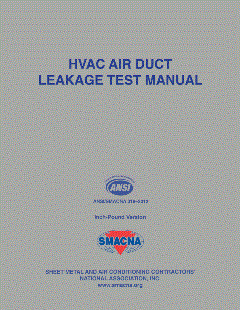Poor ventilation leads to water damage, mold, and other issues in the home that cause respiratory problems, allergies, and other illnesses for the occupants. Oftentimes, homeowners don’t even realize the problems they are having are related to the indoor air they’re breathing. By taking the opportunity during a home visit to diagnose indoor environmental issues, contractors are able to educate homeowners on the importance of IAQ.
IDENTIFYING THE ISSUE
“Typically, customers are not looking for better ventilation, since most of them don’t even know it is a challenge,” said Steve Moon, owner, Moon Air Inc. in Elkton, Maryland. “They know they have symptoms, and many that do know of their symptoms are getting educated to the fact that elevated levels of particles, germs, and gases are the culprit. So, our strategy is not to go in and address ventilation only; we explain the challenge in its entirety and give the homeowner their options for a complete system to address it all or partially.”
A common method to establish and diagnose ventilation issues is utilizing a blower door test. For Rich Morgan, president, Magic Touch Mechanical Inc., Mesa, Arizona, it’s the first step in the diagnosis process.
“The blower door utilizes a large fan that pressurizes or depressurizes the building, enabling us to determine how tight or leaky the building is and how many air changes per hour are happening,” he said.
Paul Ainsworth, owner of M.L. Building Technologies LLC, Millsboro, Delaware, starts the diagnosis process with a series of questions to get an idea of what is going on in the customer’s home, such as excessive dust, odors, hot or cold rooms, humidity issues, stale air, etc. He will then recommend a survey of the system to check that air distribution is correct, including the placement of return registers in relation to supply air. He utilizes a digital anemometer for both supply and return air and double checks adequate filter size and duct sizing.
MOST COMMON ISSUES FOUND
According to Morgan, one of the most common ventilation issues seems to surprise most homeowners — the home is too tight.
“From an energy savings perspective, the idea of a home being very tight sounds attractive; however, from an IAQ perspective, this is not a good problem to have,” he said. “Buildings that are too tight can recirculate airborne contaminants over and over again in homes that do not have good air filtration and purification systems.”
In addition to tight homes, Steve Mores, vice president of sales, Dynamic Air Quality Solutions in Aura, Illinois, said low airflow, high humidity, and ghosting are also major problems.
“With low air flow due to a system’s condition or design, there aren’t enough cubic feet per minute entering the room to satisfy the demand of the heat load,” he said. “It can be maintenance issues, a shut damper, or design issues.”
He added that high humidity occurs when too much air enters the conditioned area too quickly, and the area doesn’t properly lower the moisture level. And ghosting occurs because many homes don’t have enough fresh air injected into them, so the HVAC system will pull a vacuum on the inside walls to pull air from the attic. This results in a dark line next to the baseboards on the inside walls.
DELIVERING SOLUTIONS
In order to improve ventilation in residential buildings, contractors can utilize high-output UVC systems and air cleaners that collect particles smaller than one micron, according to Moon.
Additionally, Eric Knaak, vice president and general manager, Isaac Heating & Air Conditioning Inc., Rochester, New York, said whole-house dehumidifiers, air-to-air exchangers, and air sealing of the envelope and attic ventilation are some of the most in-demand services they offer at Isaac’s to improve the ventilation and IAQ of a home.
Energy recovery ventilators (ERVs) or heat recovery ventilators (HRVs), which replace a portion of the indoor air with fresh, outside air, are also popular solutions.
“In my region, ERVs seem to work the best, complying with ASHRAE 62.2 for outside air without adding additional load,” said Ainsworth. “I have begun including a four- to five-inch media-type filter system with a minimum of MERV-11 rating.”
Morgan creates a custom ventilation system that consists of an HRV or ERV. The system handles air changes, provides hospital-grade HEPA air filtration with multiple return ducts throughout the home, and includes an air purification system, such as an air scrubber or UV lights.
Similarly, since the needs of each customer are unique, Steve Schmidt, president, Frederick Air Inc., Frederick, Maryland, also provides customers with custom solutions that include an HRV.
“We often recommend humidifiers, air cleaners, UV lights, whole-home humidification systems, fresh air ventilators, and an HRV,” he said.
Knaak concluded by saying that although customers may not be calling and requesting it, it is the contractor’s responsibility to diagnose the ventilation issues in the home and provide the homeowner with a solution.
“Think about the friend whose house smells like dogs,” he said. “Every time you go inside, you smell it, but they can’t. They have adjusted to the smell, so as far as they are concerned, there is no issue. IAQ is the same thing most of the time. Our auditors are making clients aware of issues they didn’t know or realize they had.”
Publication date: 5/14/2018
Want more HVAC industry news and information? Join The NEWS on Facebook, Twitter, and LinkedIn today!






